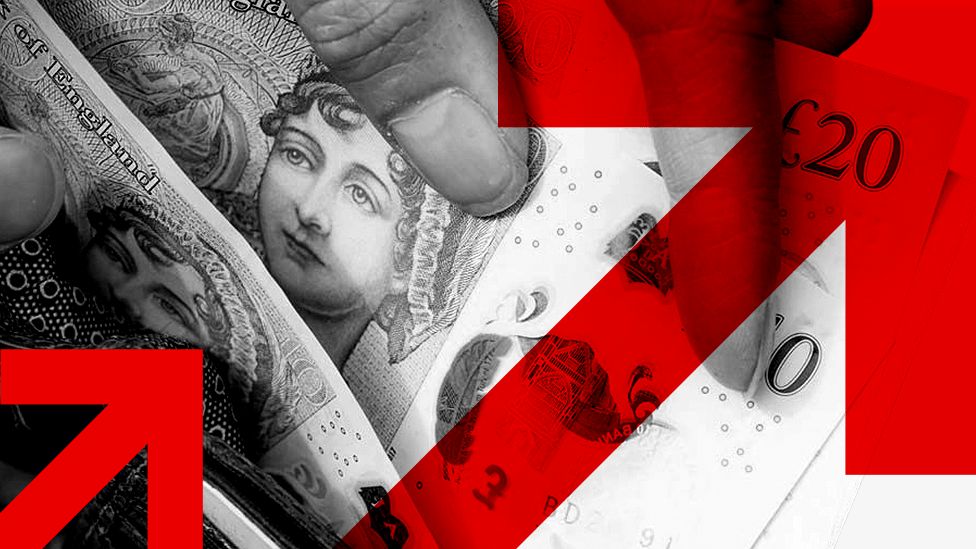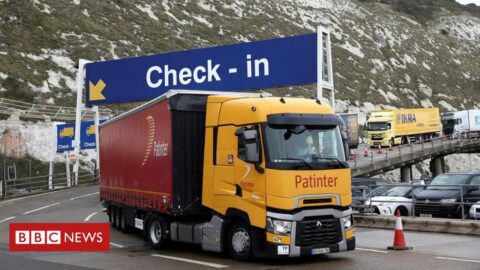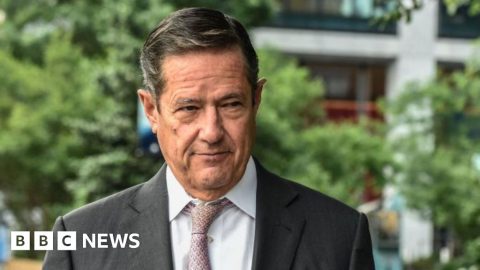
In a speech focused at least partially on an upcoming election, Chancellor Jeremy Hunt has outlined his choices and decisions about the nation’s finances.
In turn, that will affect the money and prospects for individuals across the country.
These are some of the key policies affecting your personal finances.
A tax cut, but remember the bigger picture
The chancellor announced a cut in National Insurance (NI) rates.
NI works in a similar way to income tax, deducting a fixed percentage of the money you earn from your wages. What you pay in pounds and pence depends, of course, on what you earn.
Employees under pension age who earn less than £12,570 a year pay no NI, and neither do people over the state pension age, even if they are still working.
For employees on between £12,570 and £50,268, the current NI rate is 12% on earnings and 2% on earnings above that.
This initial contribution will be cut from 12% to 10% from 6 January, which the chancellor says will save £450 for someone on the average salary of £35,000.
Really importantly this only partially offsets the fact that NI and income tax bands – or thresholds – are already frozen until 2028. That means any kind of pay rise could drag you into a higher tax bracket, or will see a greater proportion of your income taxed than would otherwise be expected.
The chancellor also said NI contributions will be reduced for the self-employed. He has abolished the class 2 flat-rate weekly contributions of £3.45 a week, currently paid if earnings for the year are above £12,570, and is reducing class 4 contributions on all earnings between £12,570 and £50,270 from a rate of 9% to 8%.
VAT – a tax added when you buy most goods and services – is unchanged.
Price rises are forecast to slow
Sharply rising prices, especially for essentials such as food, have been central to cost of living pressures felt in recent times. Compared with two years ago, food prices are up by 30%, official figures show.
The government’s independent forecaster, the Office for Budget Responsibility (OBR), now expects the inflation rate – which charts the rising cost of living – to drop to 2.8% by the end of next year, having peaked at over 11% in October last year. It must be remembered, however, that this is a forecast, not a given.
The target set for inflation is 2%, which the OBR says will be hit during 2025.
Prices will still rise, but not as fast as they have been. We may hear of one fresh price rise as soon as Thursday, when the energy regulator Ofgem is expected to allow suppliers to charge more than now for domestic gas and electricity from January to March.
All of this feeds into the decisions of the Bank of England when setting interest rates, which affects the cost of borrowing money including mortgage rates.
Will we feel the benefit?
Ultimately, the OBR says living standards, as measured by real household disposable income per person, are forecast to be 3.5% lower in 2024-25 than their pre-pandemic level – the largest reduction in real living standards since official records began in the 1950s.
Minimum wages to rise in April
Those on the lowest incomes will receive a pay rise in April, with 21 and 22-year-olds getting the biggest increase.
The changes mean:
- The National Living Wage for over-23s rises from £10.42 an hour to £11.44 an hour
- Those aged 21 to 22 will be eligible for the National Living Wage for the first time, so they will also receive £11.44 an hour, up from £10.18 an hour
- The National Minimum Wage for 18 to 20-year-olds rises from £7.49 to £8.60 an hour
- The National Minimum Wage for under-18s will rise from £5.28 to £6.40 an hour
- The apprentice rate goes up from £5.28 to £6.40 an hour
The apprentice rate applies to people aged under 19, or people over 19 in the first year of their apprenticeship. The minimum wage is the same across all parts of the UK. Employers will foot the bill, although the government itself is a major employer.
Confirmation of 6.7% rise in benefits
A range of benefits received by millions of people will rise by 6.7% in April, in line with the rate of rising prices (as of September), after some debate in the Treasury.
Some disability benefits, by law, are inflation-linked, but ministers had some flexibility over others such as universal credit, which is claimed by 6.2 million people, many of whom have jobs.
There is a complicated range of benefits. As an example, a family with two children on standard allowances should receive about £900 more in the year from April, compared with the previous 12 months, according to the Joseph Rowntree Foundation. The chancellor said the average increase would be £470 for 5.5 million households next year.
Benefits are fully devolved in Northern Ireland, but changes are likely to be similar to those for the rest of the UK.
Help to pay the rent is improved
The support provided through the benefits system to private renters through Local Housing Allowance rates have been frozen since 2020. Recently, the cost of renting has soared, leaving many struggling to pay.
The allowance determines how much help people who rent privately get towards the cost through housing benefit or universal credit. It will now be worth 30% of local market rents.
But welfare payments at risk for some
Part of the speech, but outlined in advance by ministers is a plan to encourage people to take jobs.
From late next year, anyone who fails to find work for more than 18 months will have to undertake work experience placements.
Some claimants who refuse work or to engage with job centre staff would need to reapply for benefits, so will lose access to them for a period of time. MPs will have to approve the plan.
There will also be an overhaul of rules for people who currently receive benefits because they are unable to work owing to health conditions.
State pension going up
There has been intense speculation over the rise in the state pension next April but, in the end, Mr Hunt said he would stick to the conventional rise under the so-called triple-lock.
That promise sees the state pension rise in line with the highest of average earnings, inflation, or 2.5%. It will go up by 8.5% in line with pay increases (including bonuses).
That means, from April 2024, it will be worth:
- £221.20 a week for the full, new flat-rate state pension (for those who reached state pension age after April 2016)
- £169.50 a week for the full, old basic state pension (for those who reached state pension age before April 2016)
More expensive to smoke, but not to drink
Duty on hand-rolling tobacco will rise by an additional 10%, but for beer, cider, wine and spirits will frozen until August next year – a year on from the last rise.
Future of cost-of-living payments?
Nothing was said of cost-of-living payments, which have provided a lifeline for many people on low incomes.
There is another payment for pensioners this winter, and one for low-income people on benefits in the spring. As yet, it seems there are no clear plans of further targeted financial help to help people pay the bills.









Recent Comments